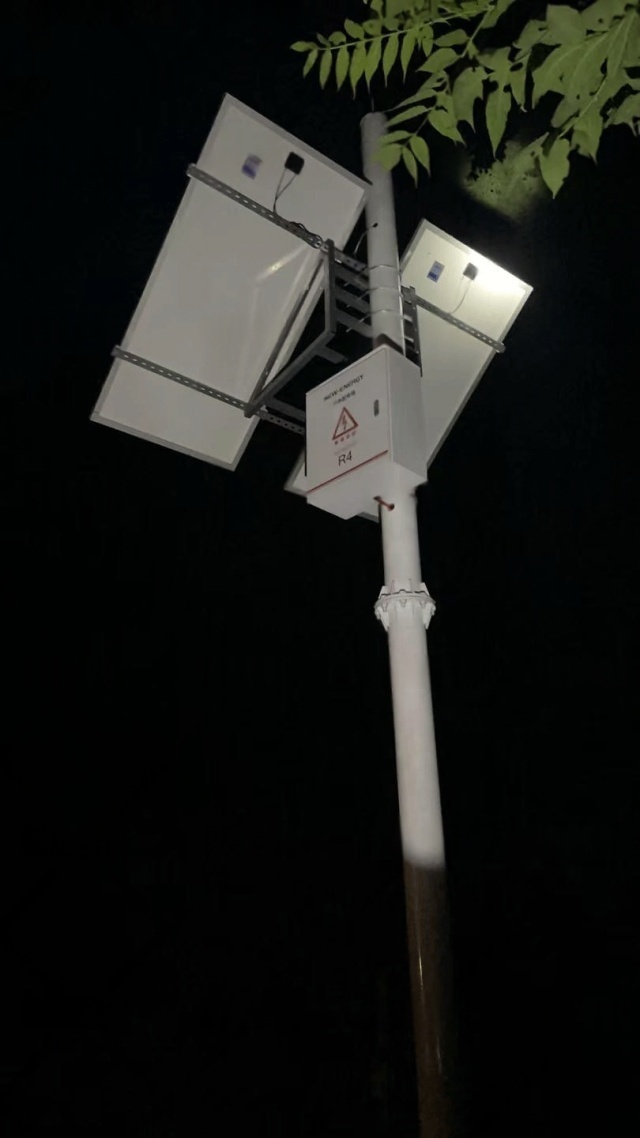The Tonghua River Monitoring Project in Jilin Province adopts an off-grid solar-powered system to ensure 24/7 energy supply for hydrological monitoring and flood-control surveillance. The solution integrates 100W/60Ah and 400W/200Ah configurations to achieve reliability in severe cold and humid conditions while reducing maintenance costs for remote monitoring points.

Tonghua’s river monitoring sites operate with independent solar power.
Dual configurations (100W & 400W) cover both light and heavy surveillance loads.
Low-temperature LiFePO₄ batteries ensure reliable discharge in freezing winters.
Smart controllers balance dual systems in real time.
Waterproof, anti-corrosion housings resist flood and humidity damage.
Data integrity reached 100% under continuous power supply.
Reduced manual inspections cut annual O&M costs significantly.
Clean solar energy eliminates grid dependency in remote riverbanks.
The modular design adapts to diverse monitoring applications.
The project strengthens ecological protection and early-warning reliability.
A: You can choose between 100W or 400W configurations depending on your load. Kongfar provides OEM customization including sensor integration, data transmission modules, and remote management options.
A: Yes. The Tonghua case demonstrates compliance with CE, RoHS, and ISO 9001, meeting technical requirements for municipal and national-level projects.
A: Our engineers offer free load assessment and design consultation to ensure power balance and energy autonomy for 3–5 days in off-grid environments.
Tonghua, located in a temperate monsoon climate zone, experiences humid summers and freezing winters. Monitoring devices along remote riverbanks face unstable grid access, frequent outages due to heavy rain or snowmelt floods, and high maintenance expenses from scattered installations.
✅ The 100W / 60Ah system powers low-load monitoring nodes. Its cold-resistant and anti-moisture coating ensures daily generation under cloudy conditions.
✅ The 400W / 200Ah version supports high-load equipment, maintaining full-day operation for HD cameras, sensors, and transmission units.
A: By using low-temperature active LiFePO₄ cells and insulated housings, discharge efficiency remains above 90% at –20°C, ensuring uninterrupted monitoring throughout Tonghua’s winter season.
The Dual-system synergy achieved zero-interruption operation, ensuring complete hydrological and environmental data collection, enabling early flood alerts and timely response.

| Category | 100W / 60Ah System | 400W / 200Ah System |
| Application | Low-load nodes | High-load CCTV & telemetry |
| Average Daily Output | 0.4 kWh | 1.6 kWh |
| Backup Days | 3 days | 5 days |
| Installation | Single-pole | Ground-mount reinforced |
| Recommended Use | Standard monitoring applications | Intensive data collection & HD video transmission |
Conclusion: The 400W system increased uptime by approximately 33%, ideal for continuous HD surveillance and multi-sensor applications.
In August 2025, the Bureau deployed 12 dual-system kits along tributaries. After installation, uptime reached 100%, and alerts for flood peaks improved by 30 minutes on average, preventing local property damage.
MPPT (Maximum Power Point Tracking): Optimizes photovoltaic output.
LiFePO₄: Lithium-iron-phosphate battery chemistry with superior cycle life.
IP66: Dust-tight and protected against heavy water jets.
DoD (Depth of Discharge): Percentage of usable battery capacity.
Author: Technical Team of Shenzhen Kongfar Technology Co., Ltd.
Reviewer: Senior Engineer Liu Haitao
Last Updated: November 2025
Certificates: CE No. 2025-E1103, RoHS R-2058, ISO 9001:2023
Disclaimer: Performance metrics may vary under extreme snow cover; installation must follow GB/T 50797-2020.
Used in river basins and reservoirs for early flood alerts.
👉 Explore Flood-Control Solar Systems
Ensures stable power for remote moisture sensors and valves.
👉 See Agricultural Monitoring Kits
Provides 24-hour video power supply for transportation authorities.
👉 View Highway Solar Solutions
Reliable off-grid power for security and environmental monitoring.
👉 Learn About Industrial Systems
A1: Yes. Anti-snow coatings and high-efficiency panels maintain generation even with partial coverage.
A2: Up to 72 hours continuous autonomy from fully charged LiFePO₄ batteries.
A3: Only quarterly inspections are needed; remote telemetry tracks battery health.
A4: 4G, LoRa, and RS-485 interfaces for real-time data transmission.
A5: Yes, open protocols enable integration with municipal or provincial monitoring platforms.
A6: CE, RoHS, and ISO 9001, ensuring reliability and environmental safety.
A7: LiFePO₄ batteries maintain 80% capacity after 2000 charge cycles.
A8: Yes, Kongfar offers full OEM/ODM service for global integrators and distributors.
✅ Reliable 24/7 off-grid operation in extreme climates
✅ Customizable power configurations for diverse monitoring loads
✅ Certified materials and proven field performance
✅ Reduced O&M costs with smart remote management
👉 Get Your Technical Quote Within 24 Hours
For project consultation, customized solar monitoring kits, or partnership inquiries, please visit our official website at https://www.kongfar.com or email us directly at tony@kongfar.com.
Backed by Shenzhen Kongfar Technology Co., Ltd., a certified high-tech manufacturer with proven global project experience.